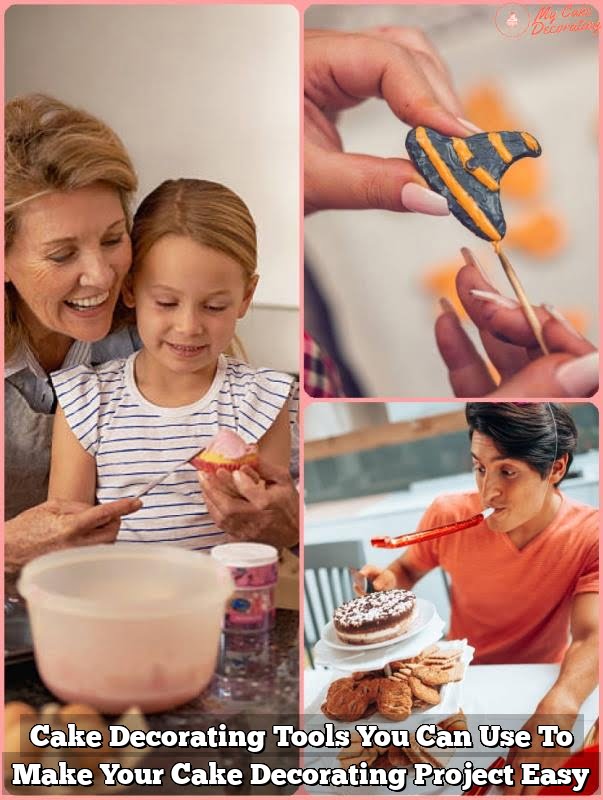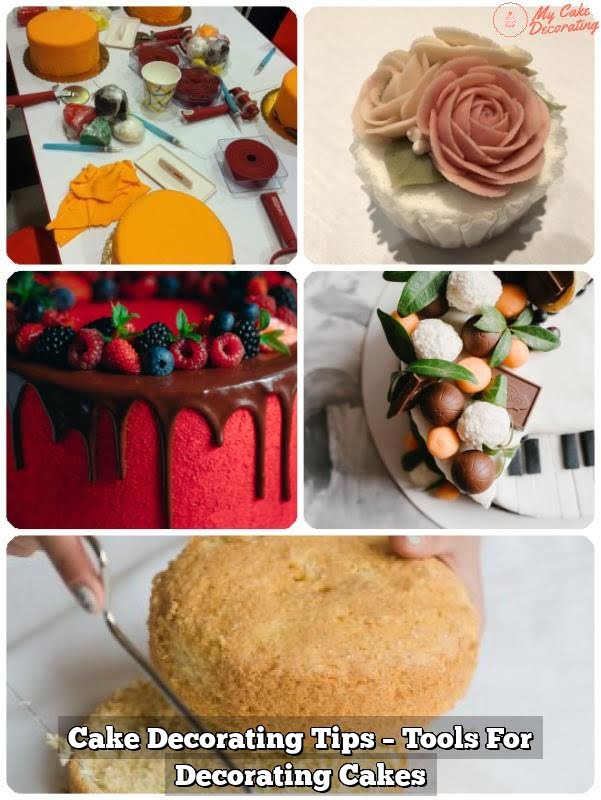Are you looking to elevate your cake decorating skills? Learn how to use gelatin in cake decorating for stunning results. Gelatin plays a crucial role in creating beautiful and intricate designs on cakes, and knowing how to properly use it can take your creations to the next level.
In this article, we will explore the different types of gelatin used in cake decorating, how to prepare and use gelatin for mirror glaze, creating stunning gelatin flowers and decorations, stabilizing whipped cream with gelatin, troubleshooting common issues, and more. Whether you’re a beginner or experienced baker, mastering the art of using gelatin in cake decorating is sure to impress your friends and family.
Gelatin has been an essential ingredient in cake decorating for many years. It is a versatile substance derived from animal collagen that helps create various textures and effects on cakes. From mirror glazes to delicate flower decorations, gelatin is a key component in achieving professional-looking results. Understanding the history of using gelatin in cake decorating can provide invaluable insights into traditional techniques and modern advancements.
In the upcoming sections, we will delve into the different types of gelatin used for cake decorating, including their specific uses and how to choose the right type for various techniques. Additionally, we will provide a step-by-step guide on preparing gelatin for cake decorating, along with tips for achieving the perfect consistency.
So whether you’re looking to experiment with mirror glazes or create intricate gelatin flowers, this comprehensive guide will equip you with the knowledge and skills needed to harness the potential of gelatin in cake decoration.
Types of Gelatin for Cake Decorating
When it comes to cake decorating, gelatin is a versatile and essential ingredient that can be used in various ways to create stunning decorations and finishes. There are different types of gelatin available on the market, each with its own unique properties and uses. Understanding the different types of gelatin and how to choose the right one for your specific cake decorating techniques is crucial for achieving professional-looking results.
Here are some common types of gelatin used in cake decorating:
- Sheet Gelatin: This type of gelatin is available in thin sheets or leaves. It is easy to work with and often preferred by professional bakers for its consistent quality.
- Powdered Gelatin: Powdered gelatin is a popular choice for home bakers and beginners due to its convenience and long shelf life. It can be easily dissolved in liquid and used in a variety of cake decorating applications.
- Vegetarian/Agar-Agar: For those who prefer a plant-based alternative, agar-agar, derived from seaweed, can be used as a substitute for traditional animal-based gelatin. It sets at room temperature and is ideal for creating vegan-friendly cake decorations.
When choosing the right type of gelatin for your cake decorating needs, consider factors such as the desired texture, setting time, and dietary restrictions. Experimenting with different types of gelatin will allow you to discover which one works best for your specific projects.
Understanding how to use gelatin in various forms can expand your creative possibilities when it comes to cake decorating. Whether you are creating mirror glazes, delicate flowers, or stabilizing whipped cream, selecting the appropriate type of gelatin is key to achieving professional-quality results.
Remember that when using gelatins containing added sugar or flavorings (as opposed to plain “unflavored” types), these additional ingredients may affect the overall taste or appearance of your finished product. Keep this in mind when selecting your preferred approach to working with this ingredient.
Preparing Gelatin for Cake Decorating
Gelatin is a valuable ingredient in the world of cake decorating, providing a versatile and essential tool for creating stunning decorations and finishes. Whether you are looking to create delicate gelatin flowers, craft a flawless mirror glaze, or stabilize whipped cream for your cake creations, understanding how to prepare gelatin is crucial to achieving professional results.
To prepare gelatin for cake decorating, follow these steps:
- Start by blooming the gelatin in cold water. Sprinkle the powdered gelatin over the surface of cold water in a small bowl. Use about 1/4 cup of water for every teaspoon of gelatin.
- Let the gelatin sit and absorb the water for about 5-10 minutes until it becomes spongy and pliable.
- Once the gelatin has bloomed, gently heat it to dissolve. Place the bowl of bloomed gelatin over a pot of simmering water or microwave it in short bursts until fully dissolved.
Achieving the perfect consistency when preparing gelatin is essential for successful cake decorating. To ensure your gelatin is ready for use in your decorations or finishes, consider these tips:
- Avoid overheating the gelatin as this can affect its setting properties.
- If using powdered gelatin, make sure it is fully dissolved before adding it to your recipe.
- Cool the dissolved gelation slightly before incorporating it into your recipe to prevent any adverse effects on other ingredients.
Understanding how to prepare gelatine will set you on the path to mastering various cake decorating techniques and achieving flawless results. So whether you are looking to create stunning mirror glazes, intricate decorations, or perfectly stabilized whipped cream, mastering the art of preparing gelatine will elevate your cake decorating skills to new heights.
Using Gelatin for Mirror Glaze
Mirror glaze is a popular cake decorating technique that creates a shiny, reflective surface on cakes and pastries. Gelatin is a key ingredient in creating the perfect mirror glaze, as it helps to achieve the smooth and glossy finish. To use gelatin for mirror glaze, you will need to prepare it correctly and follow specific steps to ensure the best results.
To begin, you will need to bloom the gelatin by soaking it in cold water for about 5-10 minutes until it becomes soft. Once softened, squeeze out any excess water from the gelatin before using it in the mirror glaze recipe. The blooming process allows the gelatin to dissolve evenly and smoothly into the glaze mixture, ensuring a flawless finish.
When incorporating gelatin into the mirror glaze recipe, it’s important to heat the mixture gently and stir continuously to prevent lumps from forming. The gelatin should be completely dissolved in the mixture before pouring it over the cake or pastry. Once applied, allow the mirror glaze to set properly before serving or decorating further.
Common mistakes when using gelatin for mirror glaze include overheating the mixture, which can cause the gelatin to break down and lose its thickening properties. It’s also essential to strain the glaze after preparation to remove any impurities that may affect its glossy finish. By following these tips and techniques, you can use gelatin effectively for creating beautiful mirror glazes for your cakes and pastries.
| Use of Gelatin in Cake Decorating | Mirror Glaze Technique |
|---|---|
| Gelatin helps achieve smooth and glossy finish | Must prepare correctly and follow specific steps |
| Blooming process allows even dissolution into glaze mixture | Heat gently while stirring continuously |
| Common mistakes: overheating and not straining after preparation | Create shiny, reflective surface on cakes and pastries |
Creating Gelatin Flowers and Decorations
Gelatin is a versatile ingredient that can be used to create intricate flowers and decorations for cake decorating. From delicate petals to beautiful accents, gelatin offers cake decorators the ability to add stunning details to their creations. Here are some techniques for using gelatin to create beautiful flowers and decorations for your cakes.
Techniques for Creating Gelatin Flowers
One popular way to use gelatin in cake decorating is by creating edible flowers. Gelatin can be molded into different shapes and then colored with food coloring to mimic the look of real flowers. One common technique is to pour colored gelatin into flower-shaped molds and allow them to set. Once they are firm, carefully remove the gelatin flowers from the molds and arrange them on your cake for a stunning floral display.
Another technique involves using a piping bag with a small round tip to pipe intricate flower designs onto a wax paper-lined baking sheet. Once the gelatin has set, gently peel away the design from the wax paper and place it on your cake as an eye-catching decoration.
Inspirational Ideas for Using Gelatin Decorations
In addition to flowers, there are numerous creative ways to incorporate gelatin decorations onto your cakes. For example, you can create delicate butterflies by cutting out wing shapes from tinted gelatin sheets and attaching them with a small dab of frosting. Another idea is to make shimmering gemstones by pouring colored and flavored gelatin into gemstone-shaped candy molds. These vibrant decorations will add an extra element of elegance and beauty to your cake designs.
By experimenting with different shapes, colors, and textures, the possibilities for using gelatin in cake decorating are endless. Whether you’re looking to add subtle accents or make a bold statement, the flexibility of gelatin allows you to bring your imaginative cake designs to life.
Incorporating gelatine flowers and decorations not only adds visual appeal but also provides an opportunity for personalization that will surely impress your clients or guests at any event.
Stabilizing Whipped Cream With Gelatin
Whipped cream is a popular choice for cake decorations due to its light and airy texture. However, it can be challenging to keep whipped cream stable, especially in warmer temperatures. This is where gelatin comes in handy as a stabilizing agent. When properly used, gelatin can help maintain the shape and texture of whipped cream, making it an excellent option for cake decorating.
How to Use Gelatin to Stabilize Whipped Cream
To stabilize whipped cream with gelatin, start by blooming the gelatin in cold water according to the package instructions. Once the gelatin has bloomed, gently heat it until it dissolves completely. Then, allow the mixture to cool slightly before adding it to the whipped cream. It’s essential to ensure that the gelatin is not too hot when added to the whipped cream, as this could cause the cream to break down.
When incorporating the gelatin into the whipped cream, do so gradually while continuing to whip the cream. This will help evenly distribute the gelatin throughout the mixture. Be cautious not to over-whip the cream once you’ve added the gelatin, as this could result in a dense and unappealing texture.
The Benefits of Using Gelatin for Whipped Cream Stabilization
Using gelatin to stabilize whipped cream offers several benefits. Not only does it help maintain the shape of the whipped cream for longer periods, but it also prevents weeping or separation. Additionally, stabilized whipped cream holds up well in warm temperatures, making it suitable for outdoor events or parties where traditional whipped cream may not last.
Incorporating gelatin into whipped cream also provides versatility in cake decorating. It allows decorators to create intricate designs and decorations with confidence, knowing that their whipped cream will hold its shape throughout an event. Overall, utilizing gelatin for stabilizing whipped cream opens up new possibilities for creative and long-lasting cake decorations.
Troubleshooting Gelatin in Cake Decorating
Gelatin is a versatile ingredient that can be used in a variety of ways in cake decorating. However, like any other ingredient, there can be issues that arise when using gelatin for cake decorating. It’s important to know how to troubleshoot these issues in order to achieve the best results for your cakes and desserts.
One common issue when using gelatin in cake decorating is achieving the right consistency. Gelatin can sometimes become too runny or too firm, which can affect the overall look and texture of your cake decorations. To troubleshoot this problem, it’s important to understand the proper ratio of gelatin to liquid and the correct preparation method. Ensuring that you’re following a reliable recipe and carefully measuring your ingredients can help prevent issues with gelatin consistency.
Another common problem when using gelatin for cake decorating is achieving the desired clarity and shine, particularly when making mirror glaze. If your mirror glaze isn’t turning out as clear or glossy as you’d like, it might be due to improper preparation or incorrect temperatures. Troubleshooting this issue involves closely following the instructions for preparing the gelatin and ensuring that it’s at the right temperature before pouring it over your cake.
In some cases, gelatin may not set properly or adhere to your cake decorations as expected. This can be frustrating, especially if you’re creating intricate gelatin flowers or decorations. If you’re experiencing issues with gelatin not setting or sticking to your decorations, troubleshooting may involve adjusting the amount of gelatin used or exploring alternative techniques for applying gelatin to your cakes.
| Common Issues | Troubleshooting Tips |
|---|---|
| Consistency – too runny or too firm | Ensure proper ratio of gelatin to liquid; Follow reliable recipes |
| Lack of clarity and shine in mirror glaze | Check preparation method and temperatures; Pour at correct temperature |
| Gelatin not setting properly or adhering to decorations | Adjust amount of gelating used; Explore alternative application techniques |
Conclusion and Further Resources
In conclusion, gelatin is an incredibly versatile ingredient when it comes to cake decorating. From creating stunning mirror glazes to delicate gelatin flowers and stabilizing whipped cream, the uses of gelatin in cake decorating are truly endless. Whether you’re a beginner or a seasoned baker, learning how to use gelatin in cake decorating can take your creations to the next level.
As we have discussed throughout this article, there are various types of gelatin available for different techniques in cake decorating. It’s important to choose the right type of gelatin for your specific needs to achieve the best results. By following the step-by-step guide on preparing gelatin for cake decorating and understanding the common mistakes to avoid, you can ensure that your creations turn out perfect every time.
For those looking to further explore the world of using gelatin in cake decorating, there are plenty of resources available. Whether it’s online tutorials, advanced courses, or specialized books, there is always something new to learn and master in the art of using gelatin for cake decoration.
With dedication and practice, you’ll be amazed at what you can create with this simple yet powerful ingredient. So go ahead and experiment with using gelatin in your next cake project – you’ll be delighted with the results.
Frequently Asked Questions
How Do You Use Gelatin in Cake Decorations?
Gelatin can be used in cake decorations by creating intricate designs or shapes that will hold their form once the gelatin sets. It can also be used to add a glossy finish to certain decorations.
What Does Gelatin Do in a Cake?
Gelatin is often used in cakes to provide structure and stability, especially in delicate desserts like mousse cakes or mirror glaze cakes. It helps the cake hold its shape and prevents it from collapsing.
Will Gelatin Cake Melt?
A gelatin cake will not melt under normal circumstances, as gelatin sets into a solid form at room temperature. However, exposure to high temperatures or prolonged heat can cause the gelatin to soften and eventually melt, so it’s important to keep gelatin cakes refrigerated until serving time.

Welcome to my blog about home and family. This blog is a place where I will share my thoughts, ideas, and experiences related to these important topics. I am a stay-at-home mom with two young children. I hope you enjoy reading it! and may find some helpful tips and ideas that will make your home and family life even better!





